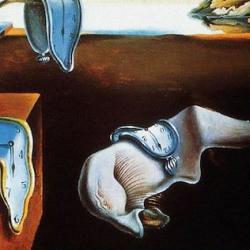During the latter part of the nineteenth century, writes Vanessa Ogle (The Global Transformation of Time), “saw dramatically enhanced interactions on a global scale, drawing people and regions into networks of production and exchange, into imperial and colonial careers and livelihoods, while disrupting autonomous, regional economic and political systems in non-Western societies. . . . The nineteenth-century world, to use a present-day term, was rapidly becoming more globalized” (3).
The global homogenization of time-keeping was a sign and facilitator of globalization. Ogle’s book examines the standardization of time within particular countries, the movements for a global calendar, and other changes in time-measurement that took place during this period.
Over what she describes as “an arduous and drawn-out process, local times were abolished in favor of time zones and contrywide mean times; the Gregorian calendar spread to parts of the non-Western world; time was eventually severed from natural and agricultural rhythms and instead assumed more abstract qualities, a grid grafted onto natural rhythms; time was increasingly linked up with occupational notions—work time, leisure time, recreational time, time for acquiring useful knowledge. In many parts of the world, these transformations for almost a century resulted in an even greater variety of times, as religious and other times and local calendars continued to be used alongside new times” (1-2).
Coordination of transport, especially by railway, was one of the main drivers, and the regularization of time took place at local as well as global levels: “In 1875, about seventy-five railway times were used in the United States, six alone in Saint Louis, five in Kansas City, and three in Chicago.” This made it difficult to make the trains run on time, and railway leaders teamed up with observatories and surveyors to push for standardized times (25).
Drawing on Benedict Anderson’s study of nationalism and Johannes Fabian’s anthropology of time, Ogle highlights the ways in which time both “made the global imagination possible” and reinforced national identity. Going beyond Anderson, she argues that nationalism was formed not only by internal efforts to form an imaginary community but also by pressures from outside: “Borders, imaginary and physical, were made when crossed and defined by what lay beyond them as much as within them, The nation was imagined not only as a national community but as a nation that formed a part of a global community of societies and other nations, all positioned in historical time.” Time also became a marker of difference between the “historical” societies (mainly European and American) and the “peoples without history.” Missionaries often noted the poor time management of non-Western peoples. Clocks and watches became “status symbols, displaying the owner’s keeping up with modern times” (7-8).
One observation: Ogle’s use of “abstract” is off. What she is describing is the detachment of time-keeping from natural cycles. That did permit time to float free of seasonal changes, sunrises and sunsets, etc. But that free-floating also allowed time to become fused with human activities, as she herself notes. While time per se may have become more “abstract,” the specific notions of “work time” or play time” aren’t abstract. The refer to time that has a particular quality because of the human activities that occupy it. That is more a “humanization” than an abstraction of time. And perhaps we can even see it, theologically, as a fuller realization of the new creation: We no longer observe days and seasons and new moons; in Christ, human beings have become lords of time.













